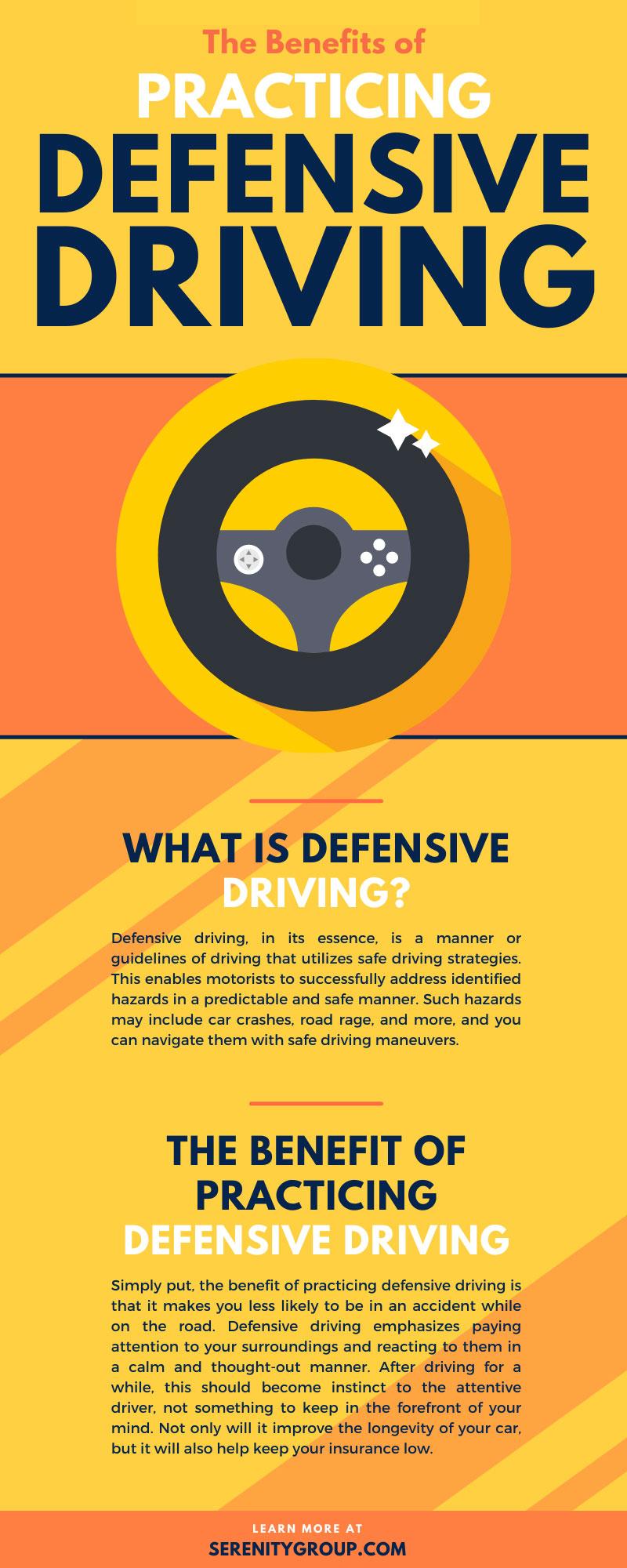What are defensive driving techniques?
Defensive driving techniques are strategies and practices employed by drivers to reduce the risk of accidents, anticipate potential hazards, and enhance overall road safety. The goal of defensive driving is to protect oneself, passengers, and others on the road by being proactive and prepared for unexpected situations. Here are key defensive driving techniques:
Stay Alert and Focused:
- Maintain full attention on the road, avoiding distractions such as texting, phone calls, or other activities that take attention away from driving.
Anticipate Hazards:
- Scan the road ahead and identify potential hazards, such as other drivers' behaviors, pedestrians, road conditions, and potential obstacles.
Maintain a Safe Following Distance:
- Keep a safe following distance from the vehicle in front, allowing enough time to react to sudden stops or changes in traffic.
Obey Traffic Rules:
- Adhere to speed limits, traffic signals, and other rules of the road. Follow road signs and markings to enhance predictability and reduce the risk of collisions.
Be Mindful of Blind Spots:
- Regularly check blind spots by adjusting mirrors and physically turning your head before changing lanes or making turns.
Use Turn Signals:
- Indicate your intentions by using turn signals well in advance. This helps other drivers anticipate your actions and reduces the likelihood of misunderstandings.
Avoid Aggressive Driving:
- Control emotions and avoid aggressive behaviors such as tailgating, weaving in and out of traffic, and road rage. Maintain a calm and patient demeanor.
Scan Intersections Carefully:
- Approach intersections cautiously, look for oncoming traffic, and be prepared for sudden stops or changes in traffic patterns.
Adjust to Weather Conditions:
- Adapt driving speed and behavior to weather conditions. Slow down in rain, snow, or fog, and increase following distances.
Be Visible:
- Use headlights during low-light conditions or inclement weather to ensure your vehicle is visible to others on the road.
Monitor Surroundings:
- Continuously scan your surroundings, including side streets, driveways, and parking lots. Be aware of potential risks from all directions.
Plan Escape Routes:
- Always have an escape route in mind in case of unexpected events. Be prepared to react quickly to avoid collisions.
Check Mirrors Regularly:
- Frequently check rearview and side mirrors to stay aware of the traffic behind you. This helps in making informed decisions.
Use Defensive Parking:
- Choose parking spaces strategically, considering ease of exit and minimizing the risk of damage from other vehicles.
Take Breaks on Long Drives:
- Avoid fatigue by taking regular breaks on long drives. Fatigue can impair reaction time and decision-making.
By incorporating these defensive driving techniques into your daily habits, you contribute to a safer driving environment for yourself and others on the road. Defensive driving is an essential skill that can prevent accidents and reduce the severity of collisions when unexpected situations arise.
What are some fundamental defensive driving techniques?
Defensive driving goes beyond just obeying traffic laws. It's about actively anticipating hazards and taking proactive measures to avoid accidents. Here are some fundamental techniques to adopt:
General Awareness:
- Scan constantly: Don't get tunnel vision. Glance at mirrors and blind spots every few seconds, especially when changing lanes, merging, or turning.
- Anticipate others' actions: Watch out for brake lights, turn signals, and erratic behavior. Assume other drivers might make mistakes.
- Maintain safe following distance: Leave enough space between you and the car in front to react comfortably to sudden stops. The 3-second rule is a good starting point.
- Avoid distractions: Put away your phone, eating, or any activity that takes your eyes off the road.
Speed and Control:
- Adjust speed for conditions: Drive slower in bad weather, heavy traffic, or unfamiliar roads. Don't speed even if others do.
- Maintain proper lane position: Avoid weaving or straddling lanes. Stay within your lane and signal clearly before changing lanes.
- Brake smoothly and predictably: Avoid slamming on brakes, which can cause skidding. Apply gentle pressure gradually to maintain control.
- Use cruise control wisely: Cruise control can help maintain a steady speed, but remain alert and ready to take over if needed.
Defensive Strategies:
- Leave an escape route: Avoid driving too close to parked cars or other obstacles that could trap you in an accident.
- Use defensive turns: If turning across oncoming traffic, turn wide to increase visibility and avoid oncoming vehicles.
- Be cautious at intersections: Look both ways and anticipate turning vehicles before proceeding through an intersection.
- Yield the right of way: Don't assume others will yield to you. Be prepared to stop even if you have the right of way.
Additional Tips:
- Get regular vehicle maintenance: Ensure your car is in good working condition, especially brakes, tires, and lights.
- Stay alert and avoid fatigue: Take breaks if you feel tired. Drowsy driving is just as dangerous as drunk driving.
- Practice in different conditions: Get experience driving in various weather and traffic situations to build your confidence and skills.
- Remember, defensive driving is a mindset: Be proactive, anticipate hazards, and take responsibility for your safety and the safety of others on the road.
By incorporating these fundamental defensive driving techniques into your routine, you can significantly reduce your chances of accidents and make the roads safer for everyone. Remember, defensive driving is not about being perfect; it's about making conscious choices to minimize risks and prioritize safety.


